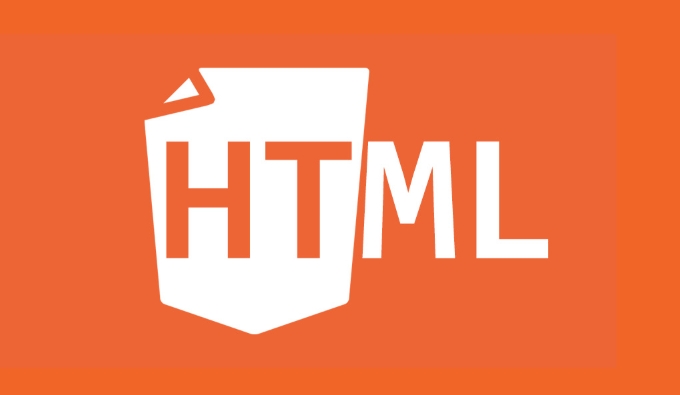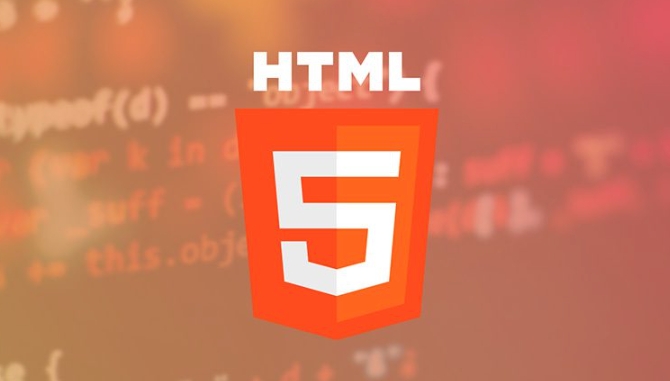Meta tags are text snippets in HTML that describe the content of a web page. They are not displayed on the page, but are used by browsers and search engines to correctly display and understand the website. They are located in the
part of HTML documents, and common types include: 1. Charset meta tags (set character encoding); 2. Viewport meta tags (affect mobile devices' responsive design); 3. Description meta tags (affect page summary in search engine results); 4. Open Graph/Twitter Cards (controls the sharing display of web pages on social media). Meta tags have an auxiliary role in SEO, such as improving click-through rates and improving mobile display, but some tags such as keywords have been ignored. Despite this, using accurate meta tags is still an effective way to optimize web display and dissemination.
Meta tags in HTML are snippets of text that describe a page's content. They don't appear on the page itself but are used by browsers and search engines to understand and display your site correctly in search results or when shared on social media.

What Do Meta Tags Look Like?
They're placed inside the section of an HTML document. A basic example looks like this:

<meta charset="UTF-8"> <meta name="description" content="This is an example webpage explaining meta tags.">
Some are required for basic functionality, while others help with SEO, social sharing, and mobile performance.
Common Types of Meta Tags You Should Know
Here are a few you'll see or use most often:

Charset meta tag – Sets the character encoding for the page. This one should always be included near the top of your
<head>:<meta charset="UTF-8">
Viewport meta tag – Important for responsive design. Tells mobile browsers how to scale the page:
<meta name="viewport" content="width=device-width, initial-scale=1.0">
Description meta tag – Used by search engines in the snippet showed under your page title in results:
<meta name="description" content="A clear explanation of what meta tags are and why they matter.">
Keep it concise (around 150 characters) and include keywords people might search for.
Open Graph / Twitter Cards – Control how your page looks when shared on Facebook, Twitter, etc. These aren't standard meta tags but follow the same pattern:
<meta property="og:title" content="Understanding Meta Tags in HTML"> <meta property="og:description" content="Learn what meta tags are and how they affect SEO and social sharing."> <meta property="og:image" content="https://example.com/image.jpg">
How Meta Tags Help With SEO
While meta tags alone won't get you to the top of Google, some play a key role in how your site appears and performs in search results.
The
descriptiontag may not directly impact rankings, but a well-written one can improve click-through rates from search results. Similarly, using Open Graph tags ensures your pages look good when shared, which can boost visibility and referral traffic.Also, the
viewporttag is cruel for mobile SEO — without it, Google might mark your site as non-mobile-friendly or render it poorly on phones.When Meta Tags Get Ignored
Search engines don't always use your meta description, especially if it doesn't match the user's query. Also, some tags like the
keywordsmeta tag are mostly ignored these days due to past abuse.Still, providing accurate, relevant meta tags is a solid practice. It gives you more control over how your page is seen across the web.
Basically that's it.
The above is the detailed content of What are meta tags in HTML and what are they for?. For more information, please follow other related articles on the PHP Chinese website!

Hot AI Tools

Undress AI Tool
Undress images for free

Undresser.AI Undress
AI-powered app for creating realistic nude photos

AI Clothes Remover
Online AI tool for removing clothes from photos.

Clothoff.io
AI clothes remover

Video Face Swap
Swap faces in any video effortlessly with our completely free AI face swap tool!

Hot Article

Hot Tools

Notepad++7.3.1
Easy-to-use and free code editor

SublimeText3 Chinese version
Chinese version, very easy to use

Zend Studio 13.0.1
Powerful PHP integrated development environment

Dreamweaver CS6
Visual web development tools

SublimeText3 Mac version
God-level code editing software (SublimeText3)

Hot Topics
 Applying Semantic Structure with article, section, and aside in HTML
Jul 05, 2025 am 02:03 AM
Applying Semantic Structure with article, section, and aside in HTML
Jul 05, 2025 am 02:03 AM
The rational use of semantic tags in HTML can improve page structure clarity, accessibility and SEO effects. 1. Used for independent content blocks, such as blog posts or comments, it must be self-contained; 2. Used for classification related content, usually including titles, and is suitable for different modules of the page; 3. Used for auxiliary information related to the main content but not core, such as sidebar recommendations or author profiles. In actual development, labels should be combined and other, avoid excessive nesting, keep the structure simple, and verify the rationality of the structure through developer tools.
 How to group options within a select dropdown using html?
Jul 04, 2025 am 03:16 AM
How to group options within a select dropdown using html?
Jul 04, 2025 am 03:16 AM
Use tags in HTML to group options in the drop-down menu. The specific method is to wrap a group of elements and define the group name through the label attribute, such as: 1. Contains options such as apples, bananas, oranges, etc.; 2. Contains options such as carrots, broccoli, etc.; 3. Each is an independent group, and the options within the group are automatically indented. Notes include: ① No nesting is supported; ② The entire group can be disabled through the disabled attribute; ③ The style is restricted and needs to be beautified in combination with CSS or third-party libraries; plug-ins such as Select2 can be used to enhance functions.
 Implementing Clickable Buttons Using the HTML button Element
Jul 07, 2025 am 02:31 AM
Implementing Clickable Buttons Using the HTML button Element
Jul 07, 2025 am 02:31 AM
To use HTML button elements to achieve clickable buttons, you must first master its basic usage and common precautions. 1. Create buttons with tags and define behaviors through type attributes (such as button, submit, reset), which is submitted by default; 2. Add interactive functions through JavaScript, which can be written inline or bind event listeners through ID to improve maintenance; 3. Use CSS to customize styles, including background color, border, rounded corners and hover/active status effects to enhance user experience; 4. Pay attention to common problems: make sure that the disabled attribute is not enabled, JS events are correctly bound, layout occlusion, and use the help of developer tools to troubleshoot exceptions. Master this
 Configuring Document Metadata Within the HTML head Element
Jul 09, 2025 am 02:30 AM
Configuring Document Metadata Within the HTML head Element
Jul 09, 2025 am 02:30 AM
Metadata in HTMLhead is crucial for SEO, social sharing, and browser behavior. 1. Set the page title and description, use and keep it concise and unique; 2. Add OpenGraph and Twitter card information to optimize social sharing effects, pay attention to the image size and use debugging tools to test; 3. Define the character set and viewport settings to ensure multi-language support is adapted to the mobile terminal; 4. Optional tags such as author copyright, robots control and canonical prevent duplicate content should also be configured reasonably.
 How to associate captions with images or media using the html figure and figcaption elements?
Jul 07, 2025 am 02:30 AM
How to associate captions with images or media using the html figure and figcaption elements?
Jul 07, 2025 am 02:30 AM
Using HTML sums allows for intuitive and semantic clarity to add caption text to images or media. 1. Used to wrap independent media content, such as pictures, videos or code blocks; 2. It is placed as its explanatory text, and can be located above or below the media; 3. They not only improve the clarity of the page structure, but also enhance accessibility and SEO effect; 4. When using it, you should pay attention to avoid abuse, and apply to content that needs to be emphasized and accompanied by description, rather than ordinary decorative pictures; 5. The alt attribute that cannot be ignored, which is different from figcaption; 6. The figcaption is flexible and can be placed at the top or bottom of the figure as needed. Using these two tags correctly helps to build semantic and easy to understand web content.
 Best HTML tutorial for beginners in 2025
Jul 08, 2025 am 12:25 AM
Best HTML tutorial for beginners in 2025
Jul 08, 2025 am 12:25 AM
TolearnHTMLin2025,chooseatutorialthatbalanceshands-onpracticewithmodernstandardsandintegratesCSSandJavaScriptbasics.1.Prioritizehands-onlearningwithstep-by-stepprojectslikebuildingapersonalprofileorbloglayout.2.EnsureitcoversmodernHTMLelementssuchas,
 How to embed content from another site using the html iframe tag?
Jul 04, 2025 am 03:17 AM
How to embed content from another site using the html iframe tag?
Jul 04, 2025 am 03:17 AM
Use tags to embed other website content into your own web page. The basic syntax is:, you can add width, height, and style="border:none;" to control the appearance; in order to achieve responsive layout, you can set the size through percentage or use containers to combine padding and absolute positioning to maintain the aspect ratio, while paying attention to cross-domain restrictions, loading performance, SEO impact, and security policies. Common uses include embedding maps, third-party forms, social media content and internal system integration.
 HTML for email templates tutorial
Jul 10, 2025 pm 02:01 PM
HTML for email templates tutorial
Jul 10, 2025 pm 02:01 PM
How to make HTML mail templates with good compatibility? First, you need to build a structure with tables to avoid using div flex or grid layout; secondly, all styles must be inlined and cannot rely on external CSS; then the picture should be added with alt description and use a public URL, and the buttons should be simulated with a table or td with background color; finally, you must test and adjust the details on multiple clients.






